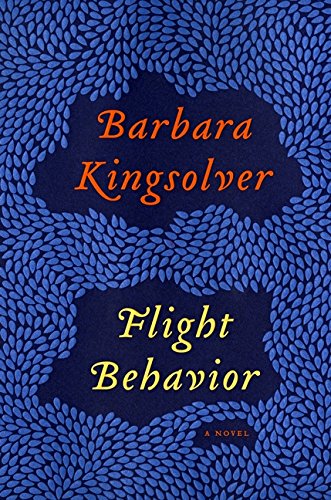Climate change is here. Trees are dead and dying, insects and songbirds are disappearing, wildlife has declined by 60 percent, glaciers worldwide are melting and ice sheets are collapsing, and weather patterns are shifting.
What will our future look like? How fast and for how long will things change? Are we mentally and physically prepared to deal with the impacts of these changes on our communities and socioeconomic structures?
In 2017, David Wallace-Wells wrote an article for New York magazine called “The Uninhabitable Earth.” He outlined the absolute worst-case scenario for climate change problems across the globe, including forest loss, sea level rise, changes in ocean currents, species loss, and more. At the time, he was vilified for overstating his case and misrepresenting the science—which he didn’t—though others argued that he had started an important conversation needed to avoid climate disaster.
Since Wallace-Wells was writing for a public audience, many people—readers unlikely to pick up a scientific journal—got his message, and they took it to heart.
Scientists themselves are also addressing the “what will happen” and “are we prepared” questions from a different angle: scenario development. They have teamed up with social scientists to derive plausible future scenarios based on both predictions of physical earth parameters (e.g., temperature, precipitation, biodiversity, wildlife, human populations), and how social scientists and humanities researchers think society will respond to those changes (e.g., economic, migration, political). In an interview with the LA Review of Books, seismologist Lucy Jones notes that the key question facing a post-disaster society is whether humans band together in communities to help each other or look out for themselves at the expense of others.

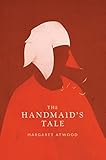 We don’t need more data to prove that climate change is a problem. Instead, we need to show people what life will look like under current and future climate-change conditions, and to share ideas about how to mitigate those conditions. We know that people are more likely to absorb information from stories than from data and lectures. Thus, like scientists collaborating with social scientists, authors of post-apocalyptic literature also apply scenarios to create analogues for our potential future, in the same way that George Orwell’s 1984 and Margaret Atwood’s The Handmaid’s Tale are used as analogues for the current political climate.
We don’t need more data to prove that climate change is a problem. Instead, we need to show people what life will look like under current and future climate-change conditions, and to share ideas about how to mitigate those conditions. We know that people are more likely to absorb information from stories than from data and lectures. Thus, like scientists collaborating with social scientists, authors of post-apocalyptic literature also apply scenarios to create analogues for our potential future, in the same way that George Orwell’s 1984 and Margaret Atwood’s The Handmaid’s Tale are used as analogues for the current political climate.
Post-apocalyptic novels such as Octavia Butler’s The Parable of the Sower, Cormac McCarthy’s The Road, Peter Heller’s The Dog Stars, Emily St. John Mandel’s Station Eleven, Eric Barnes’s The City Where We Once Lived, Claire Vaye Watkins’s Gold Fame Citrus, and Sherri L. Smith’s Orleans could potentially prepare us for a future following either ecological and social collapse and/or a global pandemic. But how well do these books portray that future, and is that future realistic enough to engage readers after they’ve finished reading, to persuade them do something about adapting to and reducing the severity of climate change?
 1. The Parable of the Sower by Octavia E. Butler
1. The Parable of the Sower by Octavia E. Butler
This 2000 classic depicts California in the mid-2020s, where rain occurs only once every six years, and the country is falling apart both economically and socially. Residents live in walled and gated communities to protect themselves from the outside world, but protagonist Lauren knows they won’t be safe forever. As she teaches herself survival skills and caches an emergency bag, she is also pulling together her thoughts on a new philosophy of life called Earthseed. When her neighborhood is breached and her family is killed, she escapes with two of her neighbors to join the hundreds of people walking north on the main highways. Despite the dangers (drug addicts, thieves, slavers, etc.), Lauren gathers a group of trusted people with her as she walks, and shares Earthseed with them.
While the dangers of the post-apocalyptic world are clear, this is ultimately a hopeful book. Lauren has hope in humanity, which is why she connects with people on the road, helping them instead of isolating herself from them. However, Lauren is also a realist, and she and her group protect their own as necessary. The key is in deciding who is a threat and who might be an asset. Their group represents a diversity of ethnic backgrounds, giving them strength in numbers. The ideas of Earthseed also bring these travelers together and help them build a community they might not have otherwise.
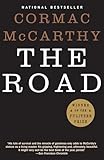 2. The Road by Cormac McCarthy
2. The Road by Cormac McCarthy
This allegorical tale doesn’t necessarily give us a practical understanding of how to exist in a future world, but instead provides multiple thought experiments for readers to consider how they might behave in a similar situation.
 Like Homer’s Odyssey, The Road follows a man and his son on their travels. Except they’re not traveling by ship, but by foot towards the coast, across a devastated, dead landscape that is permanently cold and either raining or snowing ash. It isn’t clear if theirs is a world stripped by nuclear winter, volcanic eruptions, or constant wildfires.
Like Homer’s Odyssey, The Road follows a man and his son on their travels. Except they’re not traveling by ship, but by foot towards the coast, across a devastated, dead landscape that is permanently cold and either raining or snowing ash. It isn’t clear if theirs is a world stripped by nuclear winter, volcanic eruptions, or constant wildfires.
The world of The Road wasn’t made for children. In their travels, the child and his father meet characters who challenge their pre-apocalypse morals and values, and graphically illustrate to the boy what is required to survive. He finds it difficult to make sense of a world in which his father says there are good people out there, while also ignoring or killing the people they meet.
The father often returns to his memories, which is how readers learn his wife killed herself because she couldn’t bear this life anymore. This memory—plus other events—make the reader reconsider what makes life worth living. “[The father] thought about his life but there was no life to think about…”
Why do they keep walking in such a dead world? How do you raise a child in such a world? What lessons is the father teaching his son—not just with his words, but by his very actions? What morals and values will you have to change or set aside to survive in such a world?
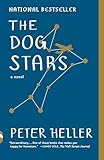 3. The Dog Stars by Peter Heller
3. The Dog Stars by Peter Heller
Hig is a small-engine pilot and Bangley is a munitions expert. They live in an abandoned airport that they’ve set up to defend from marauders. The world has been emptied of people by a flu pandemic, followed by a blood disease that kills most people and leaves those who survive in quarantine. Climate change is also a problem, with minimal winter snow pack, low summer streamflows, hot summers, and animal extinctions.
Hig and Bangley represent opposite sides of a community: Hig is more likely to talk to a stranger and try to build a relationship, while Bangley is more likely to shoot first, as he believes it’s every man for himself. As Higs says, “Follow Bangley’s belief to its end and you get a ringing solitude. Everybody out for themselves, even to dealing death, and you come to complete aloneness.”
Following the death of his dog, Hig finds himself increasingly lonely and decides to fly to the last airport from which he heard a transmission several years ago. On his way there, he discovers a woman, Cima, and her father living off the land in a box canyon far from the main roads. Here the book takes on an Edenic tone: the one man on earth finds the one woman on earth and they get together.
Like The Road, The Dog Stars asks hard questions about what you need to do to stay alive, and about what is enough to keep a person content and happy. How do you justify killing people who had planned to attack you first? How do you engage with a community of people under quarantine instead of avoiding them as most people would? How do you reconcile the memories of your previous life with this entirely different, unexpected and unplanned life? It suggests that in a post-apocalyptic world, you take what you can get or go without.
 4. Station Eleven by Emily St. John Mandel
4. Station Eleven by Emily St. John Mandel
Station Eleven is rich in the connections it makes between far-flung people and their past and present lives. The narrative switches between the present—20 years after the Georgia flu has wiped most of the population off the Earth—and the past, in the years prior to the flu outbreak. It centers on a group called The Symphony, a travelling caravan that brings music and Shakespearean theatre to the many communities that have sprung up around the Great Lakes in the wake of the pandemic.
In the present, the world has largely returned to a peaceful state. There are small settlements in places where people decided to stop walking and make homes. People hunt, grow gardens, and make their own bread. Life has not returned to what it was, but to something that most people can manage. In this case, community rather than individuality is the key for survival.
Station Eleven offers tips for dealing with the aftermath of an apocalypse. Stay put for some time before you start moving, to allow for some of the violence to die down. Move out of urban areas and into rural areas where it’s easier to hunt and grow food. Connect with like-minded people and settle in groups. Parse out work so everyone has a task and things get done. Most of all, have compassion for other people. Remember that everyone has their own set of haunting memories. As one of the characters says, “…doesn’t it seem to you that the people who have the hardest time in this—this current era…the world after the Georgia Flu—doesn’t it seem like the people who struggle the most with it are the people who remember the old world clearly?…The more you remember, the more you’ve lost.”
 5. The City Where We Once Lived by Eric Barnes
5. The City Where We Once Lived by Eric Barnes
This book is somewhat allegorical—the characters have no names, and are instead defined by their occupation: the writer, the gardener, the minister, the scavengers, the pressman, etc. They live in the North end of a city that has been largely cut off from the South—it was the southerners who decided to separate from the North, which they saw as dangerous and broken. Rather than see the value in the community the North has created, a political commissioner says “it is places like this and people like you that distract us from the work we should really be doing. The support of good people and good places, that’s what we should be providing.”
This narrative represents an example of community over individuality: For the several hundred people living in the North, there is no violence, looting, or stealing. The North has a sense of calm, quiet order. People take what they need where they can find it and leave the rest in its place. The irony is that people in the South imagine the North is a lawless place where violence is rampant and survival difficult. But readers are still faced with tough questions. What is your “capacity for violence?” How do you keep living in a city where all your family has died? How do you motivate yourself to get up every day and have a purpose?
 6. Gold Fame Citrus by Claire Vaye Watkins
6. Gold Fame Citrus by Claire Vaye Watkins
In Gold Fame Citrus, climate change has reduced western water supplies to a few small reservoirs that are guarded around the clock. The landscape west of the 100th meridian is completely arid, and a massive dune complex called the Amargosa Dune Sea has formed in the interior of the continent.
 The main characters leave the California coast for a community they’ve heard exists at the southern edge of the Amargosa. Ultimately, the female protagonist ends up in this community, which is a cult run by a charismatic, polygamous leader to whom all community members must submit. He claims to find water in the desert via dowsing, when he’s really raiding Red Cross caravans to steal water and food. As Watkins writes, “It seemed possible, as he spoke, that his words might summon thunderheads, that his voice might bring rain.” This novel reminded me of Mad Max: Fury Road, where the keeper of the water is also a keeper of women, and where the leader chases away undesirables by forcing them into an arid and deadly landscape.
The main characters leave the California coast for a community they’ve heard exists at the southern edge of the Amargosa. Ultimately, the female protagonist ends up in this community, which is a cult run by a charismatic, polygamous leader to whom all community members must submit. He claims to find water in the desert via dowsing, when he’s really raiding Red Cross caravans to steal water and food. As Watkins writes, “It seemed possible, as he spoke, that his words might summon thunderheads, that his voice might bring rain.” This novel reminded me of Mad Max: Fury Road, where the keeper of the water is also a keeper of women, and where the leader chases away undesirables by forcing them into an arid and deadly landscape.
This book also asks hard questions: How do you trust people after the apocalypse? How do you decide whether to stay or to go? How does a country manage climate migrants? Is looting ever justifiable? How do you reconcile the person you were before the apocalypse with the person you are now? How do you build up mental fortitude to survive these new times?
Smith’s novel is set in a southern United States that was hammered by seven major hurricanes—beginning with Katrina in 2005 and ending with Jesus in 2019. In the aftermath of the hurricanes, death and disease—particularly Delta Fever—are widespread. In 2025, the U.S. government withdraws from Texas, Louisiana, Florida, Alabama, and Georgia, and builds a wall to keep southerners and Delta Fever out.
The people (mostly of color) left in the south organize into tribal units based on blood type, as Delta Fever affects people of each blood type differently. It is 2056 when protagonist Fen de la Guerre delivers her tribal chief’s newborn daughter during an unexpected raid on their camp. After the Chief dies in childbirth, Fen must decide what to do with the baby. Dodging blood harvesters, members of other tribes, and an old friend who has betrayed her, she finds an unlikely ally in a northerner named Daniel Weaver, who has crossed the Wall illegally in an attempt to cure the Delta Fever. He is ultimately the last hope for the baby girl, and she sells her intricately braided hair to help save him.
Smith’s book explores the lengths that people will go to survive in a hostile environment, and the importance of building communities to support and protect each other. It portrays peoples’ adaptability in the face both of natural and man-made disasters and it shows how government misinformation spreads.
Ultimately, post-apocalyptic fiction pushes us to the extreme, to the worst-case scenario, just like Wallace-Wells’s New York magazine piece. It forces us to consider how far we’ll go to stay alive, how much we’ll sacrifice, and what we’ll do. Are you willing to steal or to fight if necessary? To kill if necessary? This type of fiction shows us how society might organize itself—from every person for themselves (The Road, The Dog Stars), to small self-contained and interconnected communities (The Parable of the Sower, Station Eleven, The City Where We Once Lived, Orleans), to cult-like communities run by charismatic would-be prophets (Gold, Fame, Citrus; Station Eleven). But post-apocalyptic fiction also gets us off the hook when it comes to climate change and social breakdown. In these books, the apocalypse has already happened and there’s nothing we can do about it. The flu pandemic has wiped out the population, climate change has completely altered the earth, the city has been abandoned, society has fallen into ruin, the nuclear winter is upon us. We are tasked only with surviving these conditions—not with preventing them.
 If we focus only on the apocalypse, aren’t we, in effect, accepting that climate change can’t be stopped? That millions of people worldwide are doomed to climate injustice? As Kathleen Dean Moore writes in Great Tide Rising, “The burdens of climate change—hunger and thirst, poisoned air and water, inundation, disruption, and wars—are imposed disproportionately on the world’s poorest communities and those that are the least responsible for its effects.”
If we focus only on the apocalypse, aren’t we, in effect, accepting that climate change can’t be stopped? That millions of people worldwide are doomed to climate injustice? As Kathleen Dean Moore writes in Great Tide Rising, “The burdens of climate change—hunger and thirst, poisoned air and water, inundation, disruption, and wars—are imposed disproportionately on the world’s poorest communities and those that are the least responsible for its effects.”
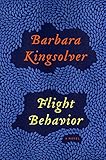

 In October of 2018, the Intergovernmental Panel on Climate Change released a special climate change report. Their tone was uncharacteristically urgent, giving us only 10 to 12 years to reduce greenhouse gas emissions. Right now, the global temperature is already 1°C warmer than it was in pre-industrial times, and we’ve already seen the impacts: hurricanes, wildfires, flooding. To prevent significant future change, we’ll have to maintain a temperature increase of only 1.5°C. Unfortunately, there is only a small likelihood we’ll meet that goal—instead we’ll likely end up with a temperature that is 2.0°C warmer than in pre-industrial times. The difference between 1.5 C and 2°C might seem small, but it has major impacts on global climate—particularly because it sets off feedback loops built into the climate system due to the reflectivity of sea ice and snow cover, the impacts of forests and wildfire on the carbon cycle, and the increasing acidity of warming oceans and their impacts on corals/shelled organisms.
In October of 2018, the Intergovernmental Panel on Climate Change released a special climate change report. Their tone was uncharacteristically urgent, giving us only 10 to 12 years to reduce greenhouse gas emissions. Right now, the global temperature is already 1°C warmer than it was in pre-industrial times, and we’ve already seen the impacts: hurricanes, wildfires, flooding. To prevent significant future change, we’ll have to maintain a temperature increase of only 1.5°C. Unfortunately, there is only a small likelihood we’ll meet that goal—instead we’ll likely end up with a temperature that is 2.0°C warmer than in pre-industrial times. The difference between 1.5 C and 2°C might seem small, but it has major impacts on global climate—particularly because it sets off feedback loops built into the climate system due to the reflectivity of sea ice and snow cover, the impacts of forests and wildfire on the carbon cycle, and the increasing acidity of warming oceans and their impacts on corals/shelled organisms.
We need literature that bridges the space between the present and the apocalypse. That considers the immediate future and the hard decisions that must be made to avert, or at least minimize, disaster. This is where a new genre called climate fiction—aka cli-fi—comes in. By writing novels about ongoing climate change and other environmental disasters, cli-fi allows us to explore what the near future might hold.
Books like Barbara Kingsolver’s Flight Behavior (about climate change), and Kim Stanley Robinson’s New York 2140 (about rising sea levels), and Omar El Akkad’s American War (about civil war, race relations, and climate) paint a picture of what our not-so-distant future may hold.
The apocalypse may be coming—and authors have envisioned it for us in many different ways—but its actual shape depends on the actions we take in the here and now, before the end of days.
Image: Unsplash/Dikaseva

